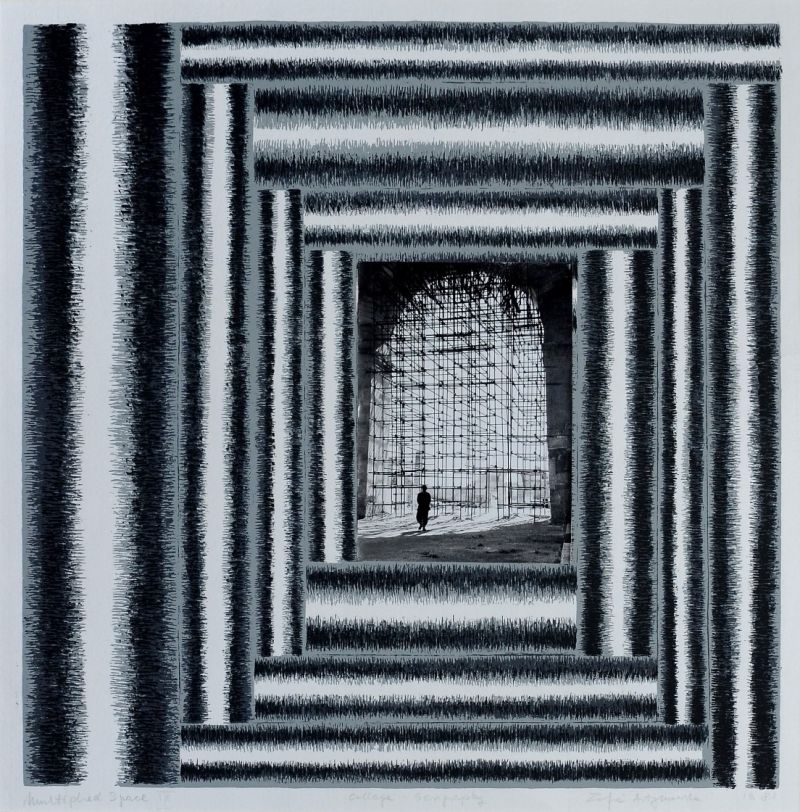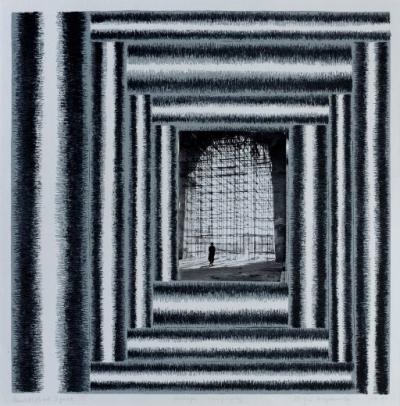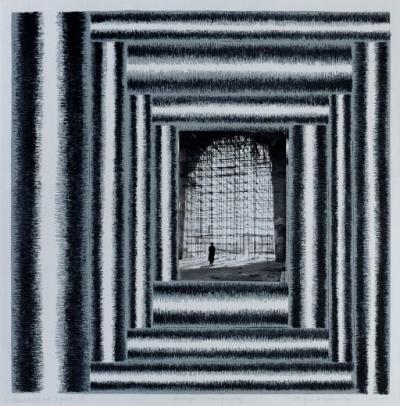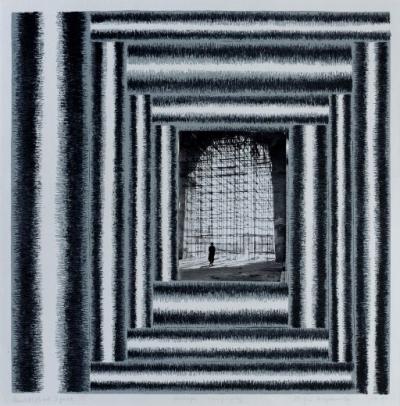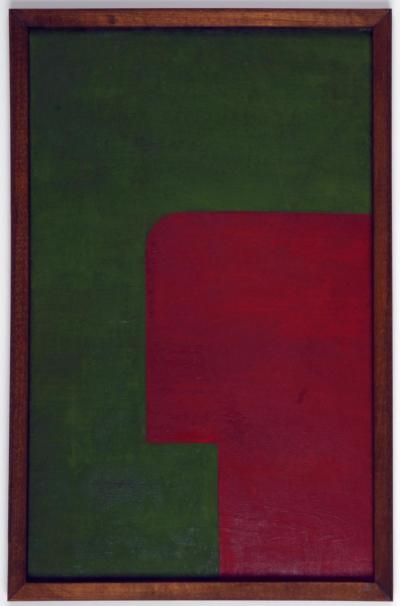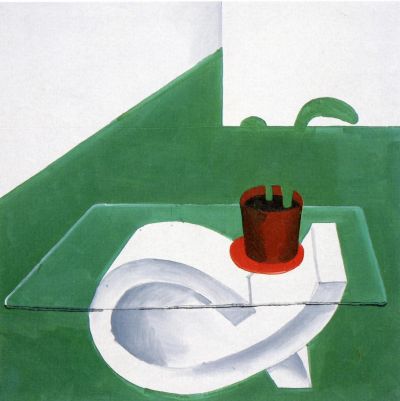The Bochum Art Museum – the Collection of Polish Art
Mediathek Sorted
-
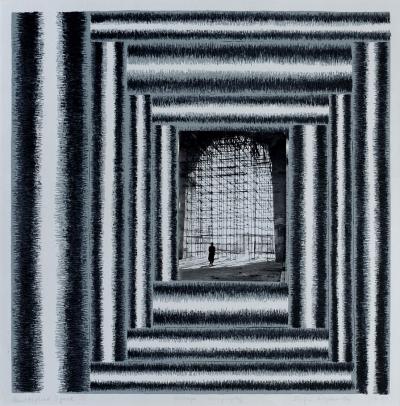
-
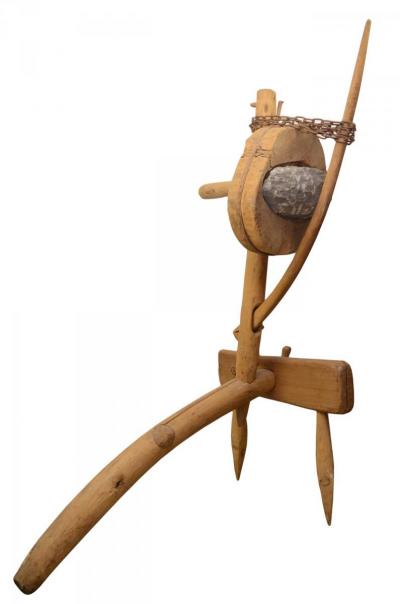
-
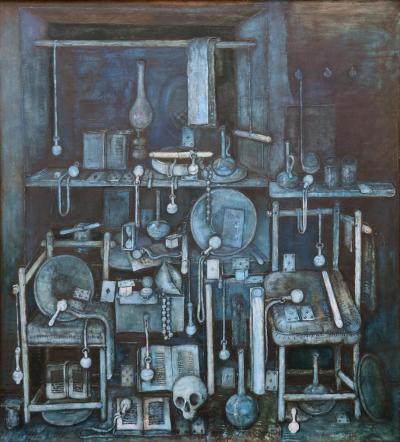
-
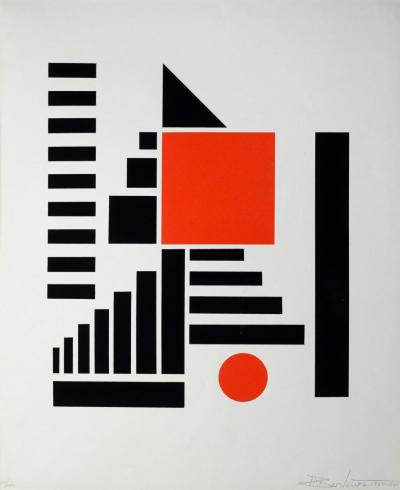
-
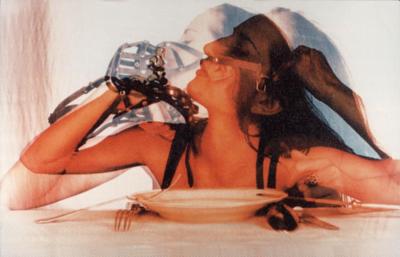
-
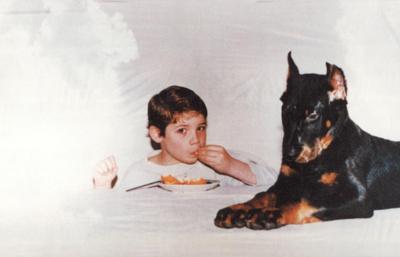
-
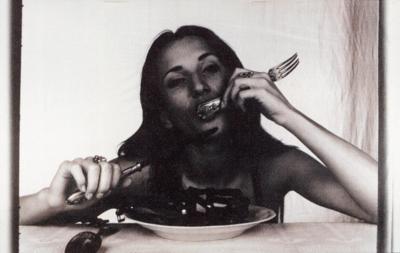
-
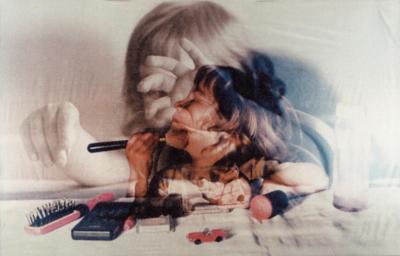
-
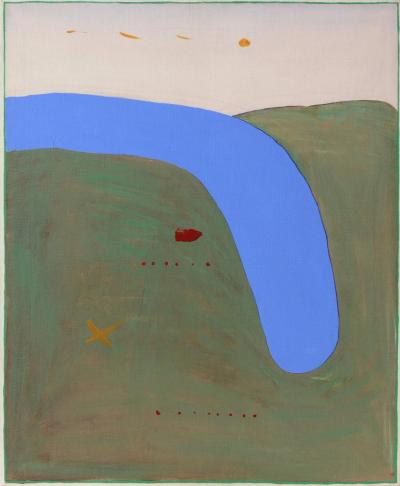
-
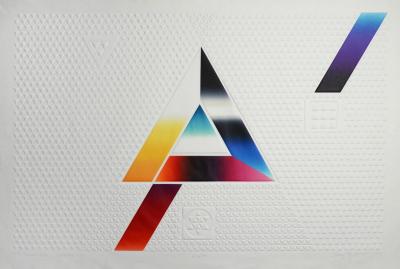
-
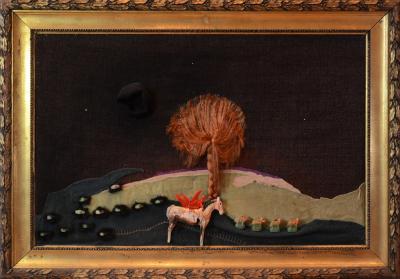
-
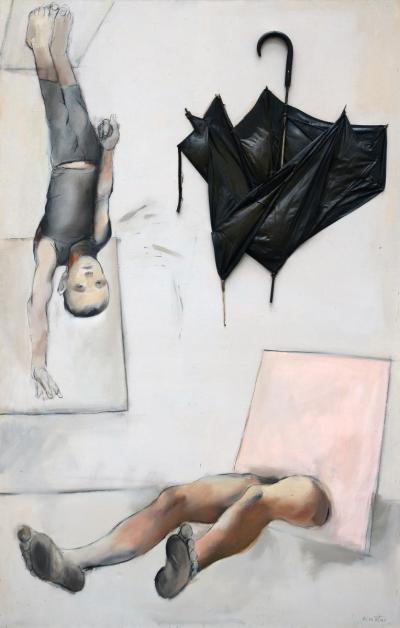
-
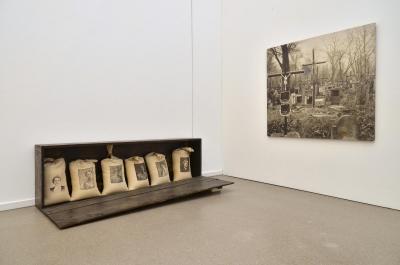
-
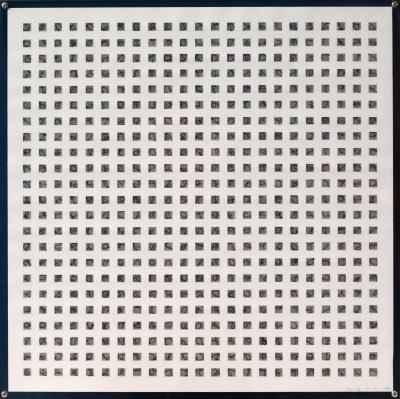
-
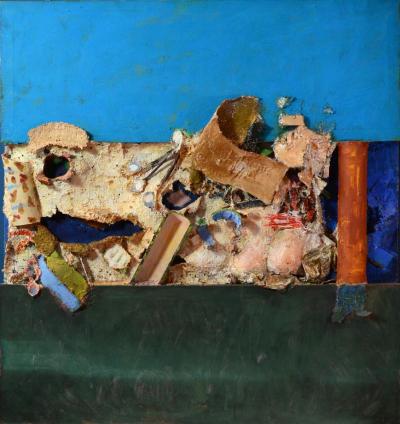
-
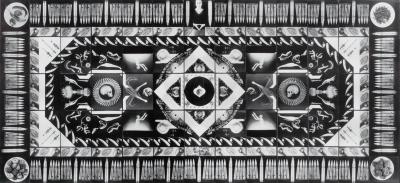
-
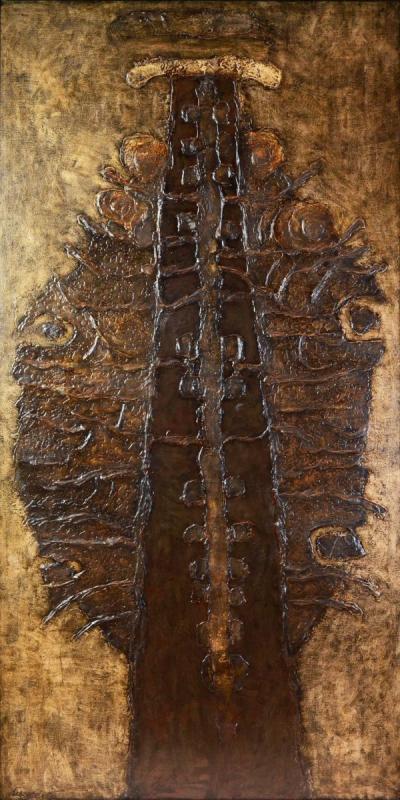
-
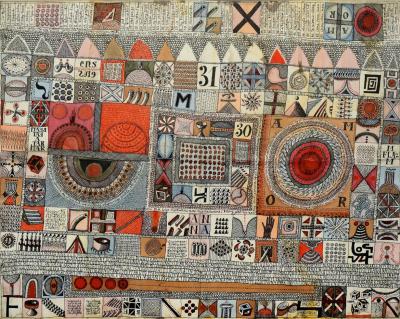
-
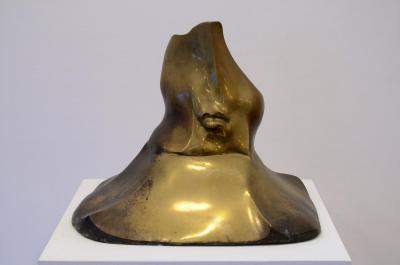
-
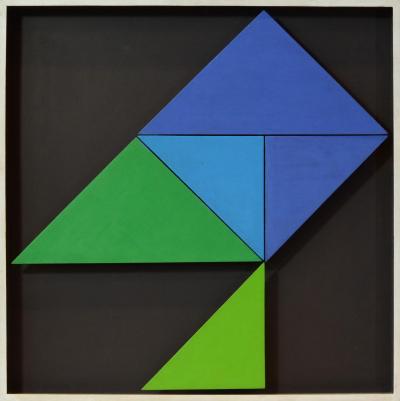
-
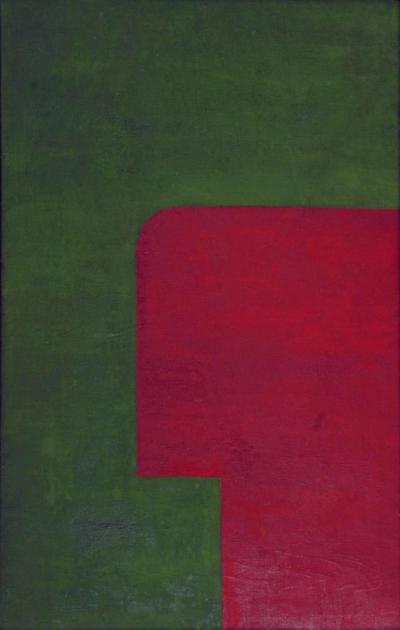
-
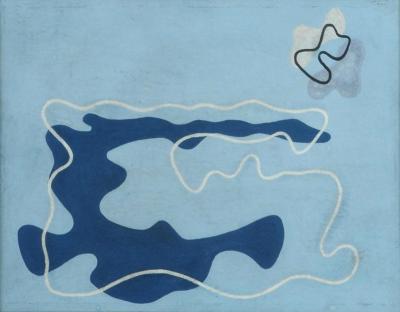
-
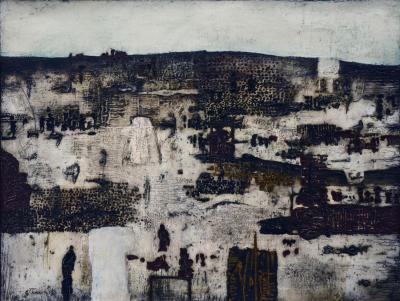
-

Kunstmuseum Bochum - Hörspiel von "COSMO Radio po polsku"

The first comprehensive exhibition of Polish art (“Polish Art Today” was the fourth exhibition in a range entitled “Profile”, and took place at the turn of 1964/65. The works were selected by two important Polish art historians Ryszard Stanisławski and Mieczysław Porębski, and placed in independent sections. Following the exhibition several works were then bought for the museum collection. These included important (and partly early) works by Jerzy Bereś, Kiejstut Bereźnicki, Aleksander Kobzdej, Jan Lebenstein, Zbigniew Makowski and Jan Tarasin. Solo exhibitions by Bereś (1971), Władysław Hasior (1971) and Stanisław Fijałkowski (1977) were to follow, after each of which works were also purchased by the museum. Important works by Tadeusz Kantor arrived in Bochum in 1976 following a solo exhibition given by the artist in Nuremberg. These artists were mostly representated in other exhibitions of Polish contemporary art shown in German and Polish museums in the 1960s and 70s.
In 1980 the Bochum Art Museum used the occasion of the “Second World Congress on Soviet and Eastern Europe Studies” to publish a catalogue of 20th century Eastern European art contained in public collections in West Germany. The catalogue covered museums in 48 towns and cities including West Berlin, and comprised works by artists from Bulgaria, Yugoslavia, Poland, Romania, the Soviet Union, Czechoslovakia and Hungary. It showed that, after 20 years of collecting activities, the Bochum Art Museum contained around 200 catalogue numbers, the second most comprehensive collection of Eastern European art following that in the Folkwang Museum in Essen. At this point in time around 30 of the 200 works came from Poland. In the same year the Bochum Art Museum purchased five works by Władysław Strzemiński following an exhibition in a Cologne Gallery. In 1986 it bought two bronze busts by Adam Myjak from his Warsaw studio, and three years later it devoted a huge solo exhibition to his works.
When the Iron Curtain came down in 1989 the “mediation work” between East and West undertaken by the Bochum Museum took a different turn. Its collecting and exhibition activities with regard to Polish art now became a part of a general international orientation. In 1994 it presented an international exhibition of still-life photography containing an important work by the Warsaw artist Zofia Kulik: this was subsequently purchased when the exhibition closed. In 2005 the museum devoted a major solo exhibition to her work – two years before she participated in the Documenta 12 in Kassel. In 1998 the Culture Secretariat of North Rhine Westphalia organised a “Transfer” exhibition of young Polish and German artists after which a photo and video installation by the Kraków artist Marta Deskur remained in the Bochum Art Museum. In 2007 the museum presented works by the artist Danuta Karsten – she originally came from the vicinity of Danzig, had studied at the art academies in Danzig and Düsseldorf and now lives in Recklinghausen – thereby extending its collecting and exhibition activities to a new generation of Polish artists, most of whom can now freely choose where they wish to live and work in Europe.
The documentation shown here describes 20 works by 18 selected Polish artists in the collection of the Bochum Art Museum. These works represent the highlights of its 55 years of collecting activities, and are simultaneously linked to group and solo exhibitions of Polish art during the past decades in Bochum. All the selected artists are numbered amongst the protagonists of Polish art in the 20th century. Very many of their works can be seen in Polish and international museums and all of them can boast of an outstanding number of older and recent exhibition catalogues and monographs as well as being honoured by art scholars on Polish websites with detailed texts in English and Polish, not forgetting their references in the German language “Allgemeinen Künstlerlexikon” (AKL). We have taken into account the greatest possible range of works by generations starting with the painter Władysław Strzemiński who was born in 1893, all the way to the object and installation artist Danuta Karsten (1963).
That said, some periods in Polish artistry are not represented at all in the collection of the Bochum Art Museum: to be precise all those styles before and simultaneous with Constructivism, like Jugendstil, expressionism, DADA and Surrealism, not forgetting Polish “Colourism” (also known as “Kapism”), a sort of neo-Impressionism practised by Polish artists in Paris in the 1930s and 1940s. One of the reasons for this is that when the Bochum Museum was set up it decided to restrict its area of collections to “post-1945 art” and this was only extended to the whole of the 20th century when Peter Spielmann took over as director in 1972.
The earliest represented generation of artists including Strzemiński, Henryk Stażewski (*1894) and Henryk Berlewi (*1894) was closely linked with international constructivism: it even set up its own constructivist artists’ association in Warsaw in 1924, the “Block” group (Blok Kubistów, Konstruktywistów i Suprematystów). Its national charisma was so powerful that the next generation of artists, who only learnt their craft after 1945 because of the Second World War, once more tended to concentrate on constructivist graphic art. These artists include Zofia Artymowska (*1923) and Jerzy Grabowski (*1933). That said, Berlewi and Stażewski also celebrated a comeback in the 1960s under the impression of geometric Op Art and minimalist conceptual art from the USA.
Similar to the GDR, Soviet socialist realism in literature and the pictorial arts in Poland were turned into state doctrine at the end of the 1940s. At the end of 1947, in a speech given by the newly elected Polish president Bolesław Bierut on the occasion of the opening of the radio house Breslau/Wrocław, he spoke of “the duty of artists to take their inspiration from the broad mass of the people”. Socialist Realism was made mandatory at the “4th General Congress of the Association of Polish Pictorial Artists” in June 1949. Nonetheless, at the same congress the dramaturg and painter Tadeusz Kantor (*1915), who had been the director of an underground theatre in Kraków during the war, spoke out in favour of the continuation of avant-garde art. Whereas Aleksander Kobzdej (*1920), a representative of the Sopot School, quickly became a recognised representative of socialist realism, Kantor (1949 in Kraków) and Strzemiński (1950 in Łódź) were dismissed from their university posts on the grounds of their disregard for socialist realism. On his return from a journey to Vietnam in 1953/54 Kobzdej turned his back on official state art and orientated himself even more to the international avant-garde after trips to Western Europe in 1957 onwards. In 1955 the Polish Minister of Culture Włodzimierz Sokorski, announced that from now on other experimental artistic forms would be permitted – a development that had been looming since the death of Joseph Stalin in 1953. As early as 1955 at the exhibition of “General Polish Recent Art” there were no more works of socialist realism on show.
By contrast to the GDR where socialist realism continue to exist right into the 1970s, the reason for this development in Poland can be attributed to the fact that Polish cultural officials began to see that socialist realism painting had become torpid and encrusted, and that Polish artists clearly loved to make the most of their freedom to travel in the West. Kantor, whose paintings, object art and installation art are represented in the Bochum collection, travelled to Paris for the first time as early as 1947. In 1957 and 1960 Kobzdej undertook study trips to Italy, Austria, France, and Switzerland; these were followed in 1960 by journeys through the USA, to England and in the Netherlands. In 1959 Hasior (*1928) received a grant from the French Ministry of culture to travel to Germany, Belgium, Holland and Italy; and finally worked in Paris. Lebenstein (*1930) used a grant from the Polish Ministry of culture to travel to Paris in 1959, where he remained permanently. Makowski (*1930) also worked in Paris between 1962 and 1963, whereas Artymowska had been a professor at the University of Baghdad since 1960. At the start of the 1960s Tarasin (*1926) travelled through the Netherlands, to France and to Sweden. A huge number of artists represented Poland at the Biennale in Venice in 1954, 1966, 1970, 1972; and at the Biennale in Sao Paulo in 1959, 1963, 1965, 1967 and 1969. As a rule they had been having solo exhibitions in Western European countries since the 50s and 60s. Kulik (*1947) had his passport withdrawn by the Polish cultural authorities once more after a work he presented at an exhibition in Malmö in 1975 incurred official disapproval.
As a result of their travels Polish artists had intensive contacts with the international art scene and processed these experiences against the background of their own personal development and events in Poland to create their own international avant-garde works. Thus Bereś, Kantor, Hasior and Kobzdej created works related to object art and assemblage techniques; and Fijałkowski, Kobzdej, Lebenstein and Tarasin made important theoretically new contributions to informal art. Makowski and Hasior produced individual works on late surrealist art, and Bereźnicki (*1935) worked on figurative painting. Myjak (*1947) is one of the most important contemporary sculptors: his works have features related to Henry Moore and Alberto Giacometti. Kulik (*1947) and Deskur (*1962) are widely regarded as outstanding representatives of international photographic art. Installation art created by Kantor and Deskur, whose works are separated by a gap of twenty years (1976 and 1997) are both represented in the Polish collection at the Bochum Museum of Art. Karsten, who shows her installations in Germany and Poland, is also represented by one of her early objects. Furthermore she is closely linked to the Bochum museum by a major exhibition of spatial installations that was shown in 2001.
The selection of Polish art in the collection at the Bochum Art Museum featured here not only comprises the most important artists and art historical periods; it also covers a representative cross-section of artistic genres including painting, sculpture, graphic works, photography, object art and installation.
Axel Feuß, April 2015
Zofia Artymowska (1923 Kraków - 2000 Warsaw)
Multiplied Space IX, 1981
Serigraphy, Collage, 60.8 x 49.7 cm (41.6 x 41.1 cm)
Zofia Artymowska, born 1923 in Kraków, died 2000 in Warsaw. She was married to the painter and graphic artist Roman Artymowski (1919-1993). Studies: 1945-50 Academy of Visual Arts, Kraków (under Eugeniusz Eibisch, diploma in painting). 1950/51 Assistant. Lived in Warsaw from 1951; in Łowicz from 1980. 1953-56 works on murals during the reconstruction of Warsaw. 1954 Golden Cross of Merit. 1960-68 Professor at the University of Baghdad. 1971-83 Lecturer at the University of Visual Arts, Breslau/Wrocław. Solo exhibitions since 1959 in Warsaw, Beirut, Baghdad, Łódź, Breslau, Stettin/Szczecin, New York. Works in museums in Baghdad, Bochum, Bogota, Breslau, Bydgoszcz, Dresden, Łódź, New York, Warsaw. More
Jerzy Bereś (1930 Nowy Sącz - 2012 Krakau)
Zwid Kamienny II, 1962
Wood, stone, H = 200 cm
Jerzy Bereś, born 1930 in Nowy Sącz, died 2012 in Kraków. He was married to the sculptor Maria Pinińska-Bereś (1931-1999). Studies: 1950-56 Academy of Visual Arts, Kraków (sculpture under Xawery Dunikowski, Diploma of Honour). 1963 1st prize in the sculpture competition, Kraków. 1966 member of the Kraków group (Grupa Krakowska II), newly formed after the Second World War. 1967 Sao Paulo Biennale. 1992 World Exhibtion in Seville, pavilion of contemporary art. Solo exhibitions since 1958 in Kraków, Bochum, Humlebæk, Sopot, Łódź, Lublin, Sandomierz, Warsaw. Works in innumerable Polish museums, also in Amsterdam, Bochum, Duisburg, Humlebæk, Oxford and Washington. More
Kiejstut Bereźnicki (*1935 Poznań, lives in Sopot)
Still Life mit Rattles, 1964
Oil on canvas, 130 x 134 cm
Kiejstut Bereźnicki, born1935 in Poznań, lives in Sopot. Studies: The College of Visual Arts in Danzig/Gdańsk (painting under Stanisław Teisseyre, 1958 Diploma). Since 1960 Assistant and lecturer, 1981-84 deputy rector, 1984 associate professor, 1994 full professor, 1965 Sao Paulo Biennale. 1969 Gold Cross of Merit. 1971, ’77, ’91 awards from the Ministry of Culture and Art. 1985 Order of Polonia Restituta. 1964 onwards, countless solo exhibitions in Poland, 1976 in Brussels, 1988/89 in Sofia, 1994/95 in Leipzig, Berlin, Darmstadt, Vienna. Works in Polish museums, in Bochum, Bordeaux, Moscow, Paris, Skopje and Sofia. More
 Henryk Berlewi (1894 Warsaw - 1967 Paris)
Henryk Berlewi (1894 Warsaw - 1967 Paris)
Mechano-Faktur Construktion, 1924/1961
Screen print, 61 x 50 cm
Henryk Berlewi, born1894 in Warsaw, died 1967 in Paris. Studies: 1904-09 School of Fine Arts, Warsaw (painting under Edward Trojanowski et al.); 1909-10 the Academy of Arts in Antwerp (under Juliaan de Vriendt); 1911-12 École des Beaux-Arts, Paris (under Paul Maurou). 1921 gets to know El Lissitzky in Warsaw, and follows him to Berlin. 1922-23 in Berlin in the circle of the European avant-garde (Mies van der Rohe, László Maholy-Nagy, Raoul Hausmann, Theo van Doesburg). Member of the November group. 1924, in Warsaw, co-founder of the constructivist group “Blok” (along with Władysław Strzemiński, Henryk Stażewski et al.); Co-founder of the Reklame office “Reklama-Mechano”. 1927, meets Kasimir Malevich in Warsaw. 1928 moves to France. 1942, flees from Paris to Nice; 1943/44, member of the French resistance. 1945, return to Paris. 1962, several month’s stay in Berlin at the invitation of the Academy of Arts. Solo exhibitions from 1921 in Warsaw, Berlin, Nice, Paris, Bremen, Brussels, Łódź. Works in Berlin, Bochum, Hamburg, Jerusalem, Krefeld, Lwiw, Łódź, New York, Paris, Stuttgart, Tel Aviv and Warsaw. More

 Marta Deskur (*1962 Kraków, lives there)
Marta Deskur (*1962 Kraków, lives there)
Memory/Losungen, 1997
Memory/Watchwords, 1997, Four-part photo work, each 123 x 200 cm, video 3 min. 12 secs.
Marta Deskur, born 1962 in Kraków, still lives there. Studies: 1980-82, Academy of Visual Arts, Kraków; 1983-88, École supérieure d'art, Aix-en-Provence (Diploma); 1986, School of Visual Arts, Bristol. 1983-88, works at the Theater Scena STU, Kraków. 1989-90, teaches drawing at Aix-en-Provence. 1992, Artist in Residence at the School of Design in Altos de Chavón. 2002/03, Philip Morris Scholar at the Künstlerhaus Bethanien in Berlin. Solo exhibitions since 1991 in Marseilles, Warsaw, Stettin/Szczecin, Breslau/Wrocław, Kraków, Lublin, Białystok, New York, Graz, Słupsk, Leipzig, Budapest, Danzig/Gdańsk and Düsseldorf. Works in Białystok, Bochum, Breslau, Budapest, Graz, Kraków, Kwangju, Łódź, Stettin and Warsaw. More
Stanisław Fijałkowski (*1922 Zdołbunów/Wolhynien, lives in Łódź).
17 I 74, 1974
Oil on canvas, 73 x 60 cm
Stanisław Fijałkowski, born1922 in Zdołbunów/Wolhynien, lives in Łódź. 1944/45 deported to Königsberg as a forced labourer. Studies: 1946-51 College of Visual Arts, Łódź (painting under Władysław Strzemiński, Stefan Wegner; Diploma in drawing under Ludwik Tyrowicz). 1947-93 Teaching activities, also as head of a painting and drawing studio, Pro Rector; 1971-78 co-founder and Dean of the Faculty of Drawing; 1983 Professor; 2002 Honorary doctorate. 1969, Sao Paulo Biennale. 1972, Venice Biennale. 1989-90, Guest professor at the Universities of Gießen and Marburg. 1990, Jan Cybis prize. 2002, ’13 Order of Polonia Restituta. Countless international awards. Member of the Belgian Academy of Sciences. Solo exhibitions since 1957 in Poland, Paris, Hamburg, Hannover, Berlin, Gießen, Marburg, Düsseldorf. Works in countless Polish and German museums, and also in London, New York, Prague and Vienna. More
 Jerzy Grabowski (1933 Gutki - 2004 Warsaw)
Jerzy Grabowski (1933 Gutki - 2004 Warsaw)
Rozważania o symbolice cyfr, 1993
Linoleum blind print with rolled on colour application on paper, 62 x 91 cm
Jerzy Grabowski, born1933 in Gutki, died 2004 in Warsaw. Studies: 1953-62 Technical College in Breslau/Wrocław (architecture); 1956-62 Academy of Visual Arts, Warsaw (drawing, diploma under Józef Mroszczak). 1962-74, activities for a variety of publishers. From 1975, professional contacts with Richard Paul Lohse. From 1976, head of the lithography workshop at the drawing faculty of the College of Visual Arts, Łódź; 2001, full time Professor. From 1993, head of the graphic seminar at the European Academy of Arts, Warsaw. Countless Polish and international awards, medals and prizes in the area of drawing. Solo exhibitions since 1963 in Warsaw, Copenhagen, Stockholm, Gdynia, Lund, Düsseldorf, Kraków, Zurich, Hagen, Hamburg, Sopot, Łódź, Chicago, Tokyo and Vichy. Works in Bochum, Bratislava, Bremen, Brussels, Helsinki, Lille, Ludwigshafen, Moscow, Vienna and in countless Polish museums. More
Władysław Hasior (1928 Nowy Sącz - 1999 Zakopane)
The Invasion of Troy, 1971
Wood, textile, figures, found pieces, electrical installation on chipboard with a gold frame, 90 x 129 x 25 cm
Władysław Hasior, born 1928 in Nowy Sącz, died 1999 in Zakopane. Studies: 1947-52, State School of Arts and Crafts in Zakopane (under Antoni Kenar); 1952-58, Academy of Visual Arts, Warsaw (sculpture, diploma under Marian Wnuk). 1957-66, teacher at the Zakopane School of Arts and Crafts. 1970-71, teacher at the College of Visual Arts, Breslau/Wrocław. 1970, Polish Pavilion at the Venice Biennale (together with Józef Szajna). 1971, prize from the Polish Ministry of Culture for his life work. Solo exhibitions since 1961 in Poland, Stockholm, Humlebæk, Göteborg, London, Helsinki, Moscow, Brussels and Budapest. Works in countless Polish museums, in Ålborg, Bochum, Edinburgh, Helsinki and Oslo. More
Tadeusz Kantor (1915 Wielopole Skrzyńskie - 1990 Kraków)
Relic no. 2, 1968
Oil on canvas, Umbrella, 200 x 130 cm
Tadeusz Kantor, born 1915 in Wielopole Skrzyńskie, died 1990 in Kraków. Studies: 1934-39, Academy of Visual Arts, Kraków (painting, set design under Karol Frycz, Zbigniew Pronaszko). 1942-44, works with an experimental theatre group. From1945, activities as a set designer in different theatres in Kraków. 1945, co-founder of the Young Artists Group (Grupa Młodych Plastyków). 1947, first trip to Paris. 1948, founder of the Kraków Group (Grupa Krakowska II). 1948-49, 1967-69, lecturer at the College of Visual Arts, Kraków. 1955, co-founder of the Cricot 2 Theatre, ebed.; Henceforth countless theatre productions, and from the 1980s worldwide theatre tours. 1959, Documenta II, Kassel. 1967, Sao Paulo Biennale. 1977, Documenta 6, Kassel. 1978, Rembrandt prize, Basel. 1979, ’82, ’86 Obie Award, New York. 1981, prize awarded by the Minister of Culture. 1982, Grand Cross of the Order of Polonia Restituta. 1990, Grand Cross of Merit from the Federal Republic of Germany. Solo exhibitions since 1956 in Warsaw, Stockholm, Paris, Düsseldorf, New York, Lausanne, Baden-Baden, Edinburgh, London, Berlin, Kraków, Tokyo, Nuremberg, Copenhagen, Florence, Prague and Zurich. Works in countless Polish museums, Bochum, Ghent, Künzelsau, Nuremberg, Paris and Stockholm. More
Tadeusz Kantor
Portrait of Mother, 1976
Installation (Photograph on canvas, wooden box, cloth bags with photo portraits)
95 x 105 cm; 26 x 159 x 90 cm
Danuta Karsten (*1963 Mała Słońca, lives in Recklinghausen)
No title, 1999
Paper, wood glue, textile threads, Plexiglass, 50 x 50 cm
Danuta Karsten, born 1963 in Mała Słońca (south of Danzig/Gdańsk), lives in Recklinghausen. Studies: 1983-85 State College of Visual Arts, Danzig (sculpture); 1986-93 Düsseldorf Art Academy under Klaus Rinke (master student) and Günther Uecker. 1998 Special prize from the Lovis-Corinth-Preis of the Esslingen Artists’ Guild. 2009 Guest Professor in Danzig. 2012 Sprecial prize from the Flottmann-Hallen, Herne. Solo exhibitions since 1994, amongst others, in Essen, Recklinghausen, Regensburg, Herne, Münster, Remscheid, Bochum, Danzig, Otterndorf, Reutlingen. More
Aleksander Kobzdej (1920 Olesko/Ukraine -1972 Warsaw)
Wide Gap between the Sky and Nature, 1969
Synthetic material, oil on canvas, 138 x 130 cm
Aleksander Kobzdej, born 1920 in Olesko/Ukraine, died 1972 in Warsaw. Studies: 1939-41 faculty of architecture at the Technical College in Lwów/Lemberg (now Lwiw); 1945, Academy of Visual Arts, Kraków (painting under Eugeniusz Eibisch); 1945-55, Assistant to Władysław Lam at the department of drawing and painting in the Technical College in Danzig/Gdańsk (1946, diploma in construction engineering). 1943, deported to Germany; flight to Yugoslavia. 1945, return to Poland. 1946-51, lecturer at the Sopot Art College (initially as an Assistant to Józef Wnuk), 1951-72 lecturer at the Academy of Visual Arts, Warsaw (faculty of interior architecture, from 1954 for painting, there 1955 diploma; dean on several occasions). 1958 part-time (1971 full time) Professor. 1965-66, chair of painting at the College of Visual Arts in Hamburg. 1952, Golden Cross of Merit. 1954, Venice Biennale. 1957, Study trips to Italy, Austria, France and Switzerland, 1960 through the USA, to England and in the Netherlands. 1959, Sao Paulo Biennale. 1964, Documenta III, Kassel. 1966, Herder prize from the Alfred Toepfer Foundation F.V.S., Hamburg, for a scholarship at the University of Vienna. Solo exhibitions since 1953 in Peking, Warsaw, Budapest, Paris, New York, Kraków, Freiburg, Copenhagen, Essen, Berlin and Stettin/Sczcecin. Works in countless Polish museums, in Bochum, New York, Stockholm, and Belgrade. More
 Zofia Kulik (*1947 Breslau/Wrocław, lives in Łomianki-Dąbrowa)
Zofia Kulik (*1947 Breslau/Wrocław, lives in Łomianki-Dąbrowa)
Who conquers the World, 1994
Multipart black and white photograph, 302.5 x 656.5 cm
Zofia Kulik, born 1947 in Breslau/Wrocław, lives in Łomianki-Dąbrowa. Married to the painter, sculptor, installation and performance artist Przemysław Kwiek (*1945). Studies: 1965-71 Academy of Visual Arts, Warsaw (Sculpture under Jerzy Jarnuszkiewicz, Oskar Hansen). 1970-87, Kulik sets up the artist duo KwieKulik with P. Kwiek. 1997, Venice Biennale. 2007, Documenta 12, Kassel. Since 1971, exhibitions by KwieKulik in Elbląg, Malmö, New York. Solo exhibitions since 1990 in New York, Warsaw, Prague, Kraków, Bochum, Rostock, Berlin. Works in Amsterdam, Bochum and in countless Polish museums. More
Jan Lebenstein (1930 Brest-Litowsk/Brześć Litewski - 1999 Kraków)
Figure no. 156, 1962
Oil on canvas, 180 x 96 cm
Jan Lebenstein, born 1930 in Brest-Litowsk/Brześć Litewski, died 1999 in Kraków. Studies: 1948-54, Academy of Visual Arts in Warsaw (painting under Kazimierz Tomorowicz, Eugeniusz Eibisch and Artur Nacht-Samborski). 1949-55, Assistant at the Warsaw Academy. 1959 onwards, resides in Paris; 1971, French citizenship. 1959, Grand Prix de la Ville de Paris; Documenta II, Kassel. 1987, Jan Cybis prize. 1998, Grand Cross of the Order of Polonia Restituta. Solo exhibitions since 1959 in Poland, Paris, New York, Brussels, Cologne, Berlin, and Chicago. Works in countless Polish and international museums. More
Zbigniew Makowski (*1930 Warsaw, lives there)
1 ½ Mandala, 1964
Incl. water colour on paper, 48 x 61 cm
Zbigniew Makowski, born 1930 in Warsaw, lives there. Studies: 1950-56, Academy of Visual Arts, Warsaw (painting under Kazimierz Tomorowicz, diploma). 1962/63, stay in Paris; gets to know André Breton. Takes part in the “Mouvement surréaliste et Mouvement Phases” exhibition in Paris. 1963, Sao Paulo Biennale. 1972, Venice Biennale. 1992, Jan Cybis prize. Study trips to Dresden, Leningrad, Venice, Budapest, Yugoslavia, Vienna and Provence. Solo exhibitions since 1957 in Warsaw, Poznań, New York, Miami, Lausanne, Düsseldorf, Bochum, St. Gallen, Zurich, Paris, Bologna, Mantua, Kraków and Danzig/Gdańsk. Works in Amsterdam, Bochum, Mannheim, New York, Paris, Prague, Rio de Janeiro and in Polish museums. More
 Adam Myjak (*1947 Stary Sącz, lives in Warsaw)
Adam Myjak (*1947 Stary Sącz, lives in Warsaw)
Head, ca. 1986
Bronze, 40 x 44 x 38 cm
Adam Myjak, born 1947 in Stary Sącz, lives in Warsaw. Studies: 1965-71, Academy of Visual Arts, Warsaw (sculpture under Stanisław Kulon et al., diploma). 1979-81, Wilhelm Lehmbruck Scholarship, Duisburg; Guest lecturer at the University of Duisburg. 1982 onwards, lecturer at the Department of Sculpture at the Academy of Visual Arts, Warsaw; 1990, Professor; 1990, ’96, ’99, 2012 Dean. 2005, Gloria Artis Gold Medal from the Ministry of Culture. Solo exhibitions since 1970 in Warsaw, Bydgoszcz, Stettin/Szczecin, Poznań, Amsterdam, Duisburg, Łódź, Kraków, Bochum, Prague, Orońsko, Białystok, Sopot and Lublin. Works in Bochum, Duisburg, St. Urban, Chicago and in countless Polish museums. More
Henryk Stażewski (1894 Warsaw -1988 Warsaw)
Relief no. 26/1968, 1968
Oil on hard fibre, 60 x 60 cm
Henryk Stażewski, born 1894 in Warsaw, died there in 1988. Studies: 1913-19 Academy of Visual Arts, Warsaw (painting under Stanisław Lentz). 1924, co-founder of the constructivist group “Blok” (along with Władysław Strzemiński, Henryk Berlewi and others), 1926, co-founder of the group “Praesens”, 1929, of the group “a.r”. 1925-27, several stays in Paris; gets to know Michel Seuphor, Piet Mondrian, Georges Vantongerloo, Paul Dermée, Céline Arnauld. 1927, gets to know Kasimir Malevich in Warsaw. 1928, Salon d’Automne, Paris. 1929, foreign member of the Paris group, “Cercle et Carré”, 1931, ditto of the “Abstraction-Création” group. 1939, his Warsaw apartment and workshop are destroyed by bombs; his complete work is lost. 1946, new artistic start with figurative compositions. 1955, Gold Cross of Merit. 1966, Venice Biennale. 1972, Herder prize from the Alfred Toepfer Foundation F.V.S. in Hamburg, for a scholarship at the University of Vienna. Solo exhibitions since 1933 in Warsaw, from 1955 in Warsaw, Rome, London, Chicago, Breslau/Wrocław, Łódź, Prague, Brussels, Cologne, Bydgoszcz and Hamburg. Works in Amsterdam, Berkeley, Bochum, the Hague, London, New York, Otterlo, Prague, St. Gallen, Rotterdam and in countless Polish museums. More
Władysław Strzemiński (1893 Minsk - 1952 Łódź)
Green red architecture, 1928
Oil on cardboard, 48 x 30 cm
Władysław Strzemiński, born 1893 in Minsk, died 1952 in Łódź. 1911-14, Studies at the Military School of Engineering in Saint Petersburg. From 1914, military service as an officer; 1916 severely wounded and a lifelong physical handicap. Meets Katarzyna Kobro in the field hospital. 1918/19, studies at the Free State Art Atelier (SVOMA) in Moscow. 1919, works in the Department of Art in the Commissariat for People’s Education in Minsk, 1919/20, lives in Smolensk where he is a member of the UNOVIS group. 1921, marries the sculptress Katarzyna Kobro, who had studied at the Moscow Art School between 1917 and 1920. 1921-26, teacher at drawing and secondary schools in Wilna/Vilnius, Vilejka Powiatowa (now White Russia), Szczekociny and Brzeziny. Works for the Kraków periodical “Zwrotnica” (The Points), 1923, at the exhibiton of modern art in Vilna. 1924 in Warsaw co-founder of the constructivist group “Blok” (along with Henryk Berlewi, Henryk Stażewski, Katarzyna Kobro and others). 1931, moves to Łódź. 1932, foreign member of the Paris group “Abstraction-Création”. From 1945, founds and teaches at the College of Visual Arts, Łódź; 1950,sacked for his lack of respect for socialist realism. Solo exhibitions since 1927 in Warsaw, Poznań, Lwów/Lwiw, Łódź; posthumous: Düsseldorf, Łódź, Warsaw, Bonn, Appeldoorn, Las Palmas. Works in Bochum, Jerusalem, New York, Otterlo, St. Petersburg, Stuttgart and in countless Polish museums (above all in the Muzeum Sztuki, Łódź). More
Władysław Strzemiński (1893 Minsk - 1952 Łódź)
Sea landscape, 1934
Gouache, 21 x 27 cm
Jan Tarasin (1926 Kalisz - 2009 Warsaw)
Large Beach, 1964
Oil on canvas, 95 x 125 cm
Jan Tarasin, born 1926 in Kalisz, died 2009 in Warsaw. Studies: 1946-51, Academy of Visual Arts, Kraków (painting under Zbigniew Pronaszko, Zygmunt Rudnicki; drawing under Andrzej Jurkiewicz). 1962, travels to China and Vietnam. 1962, member of the post-Second World War Kraków group (Grupa Krakowska II). 1963-67, lecturer at the faculty of interior architecture in Kraków. Travels to the Netherlands, France and Sweden. 1965, Sao Paulo Biennale. 1967, settles in Warsaw. 1974-96, lecturer in painting at the Academy of Visual Arts, Warsaw; 1985 associate Professor; 1987-90, Dean. 1984, Jan Cybis prize. 2005, Gloria Artis Gold medal from the Ministry of Culture. Solo exhibitions since 1957 in Warsaw, Nowa Huta, Paris, Rotterdam, Uppsala, Kraków, Lublin, Tokyo, Poznań, Stettin/Szczecin, Leipzig, Cologne, Bielefeld, Sopot, and Płock. Works in Bochum, New York, Rotterdam, Tokyo, Washington and in countless Polish museums. More

















































































